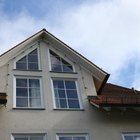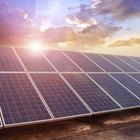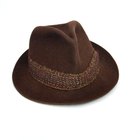European Washers and Dryers
European washers and dryers are generally made to conform to one primary problem: lack of space. The houses and apartments in Europe are often both older and closer together than those built in the United States (other countries such as Japan also have similar problems). This lack of space leads to smaller living quarters, which in turn leads to less space for large appliances such as washers and dryers. For this reason, European washers and dryers tend to be smaller than American versions, often coming as two parts of one appliance, and can only handle smaller loads. They are also designed with a greater focus on energy-efficiency and smooth operation.
There is also a difference as to the electrical current required by European washers and dryers, which is usually the 220-volt standard required by European appliances, along with the power adapters that work with European outlets. Additional adapters are needed to make such units function in America.
Cleaning Process
In process, there are also several key differences between European and American washer and dryer set-ups. European washers tend to heat their own water, while American washers bring in heated or cold water from the house's heating system. Being smaller, European washers can only handle around 9 to 13 pounds of clothes and are almost always front-loading, while American washers can often handle up to 22 pounds and come in many different designs.
The wash cycle and dry cycle of European appliances will also be longer than the American versions, since they have less space to do the same job and must take time to properly wash clothes, sometimes as long as two hours. A longer cycle also means that European models use more electricity but less water, although these differences are fading with the development of energy-efficient models.
The actual washing process also tends to differ. European washers tend to clean using friction or heat rather than the agitation methods preferred in American models, and roll in one direction while American models turn on multiple axis.
Dryers
When it comes to dryers, the primary difference is in how long it takes clothes to dry. American models can again hold larger loads, but European models hold small loads and can take time to dry, which may at times hamper wrinkle control. However, European dryers can also be more flexible in terms of placement, and some use unique condensation methods for controlling vented air, so they do not require a vent leading outdoors.
Related Articles

Appliances That Use Solar Energy

How to Use a ReliOn Humidifier

How Wide Are Double Hung Windows?

Parts of a Hair Dryer

What Is the Best Cookware for Electric ...

Steam Iron vs. Dry Iron

What Is the Difference Between a ...

Example of Passive Solar Energy

Kinetic Watches Vs. Eco-Drive Watches

What Are the Benefits of Water ...
How to Cook Prime Rib on an Electric ...

How to Reduce the Crown Size of a New ...

How to Dye Cotton Pants

How to Make Your Clothes Not Shrink in ...

How to Shrink American Eagle Shirts

How to Keep Uniforms From Fading When ...

What Is the Difference Between a ...

Dry Cleaning Vs. Steam Cleaning Clothes

1950s Gangster Clothes

Time Required to Cook Beans in a Crock ...
References
Writer Bio
Tyler Lacoma has worked as a writer and editor for several years after graduating from George Fox University with a degree in business management and writing/literature. He works on business and technology topics for clients such as Obsessable, EBSCO, Drop.io, The TAC Group, Anaxos, Dynamic Page Solutions and others, specializing in ecology, marketing and modern trends.